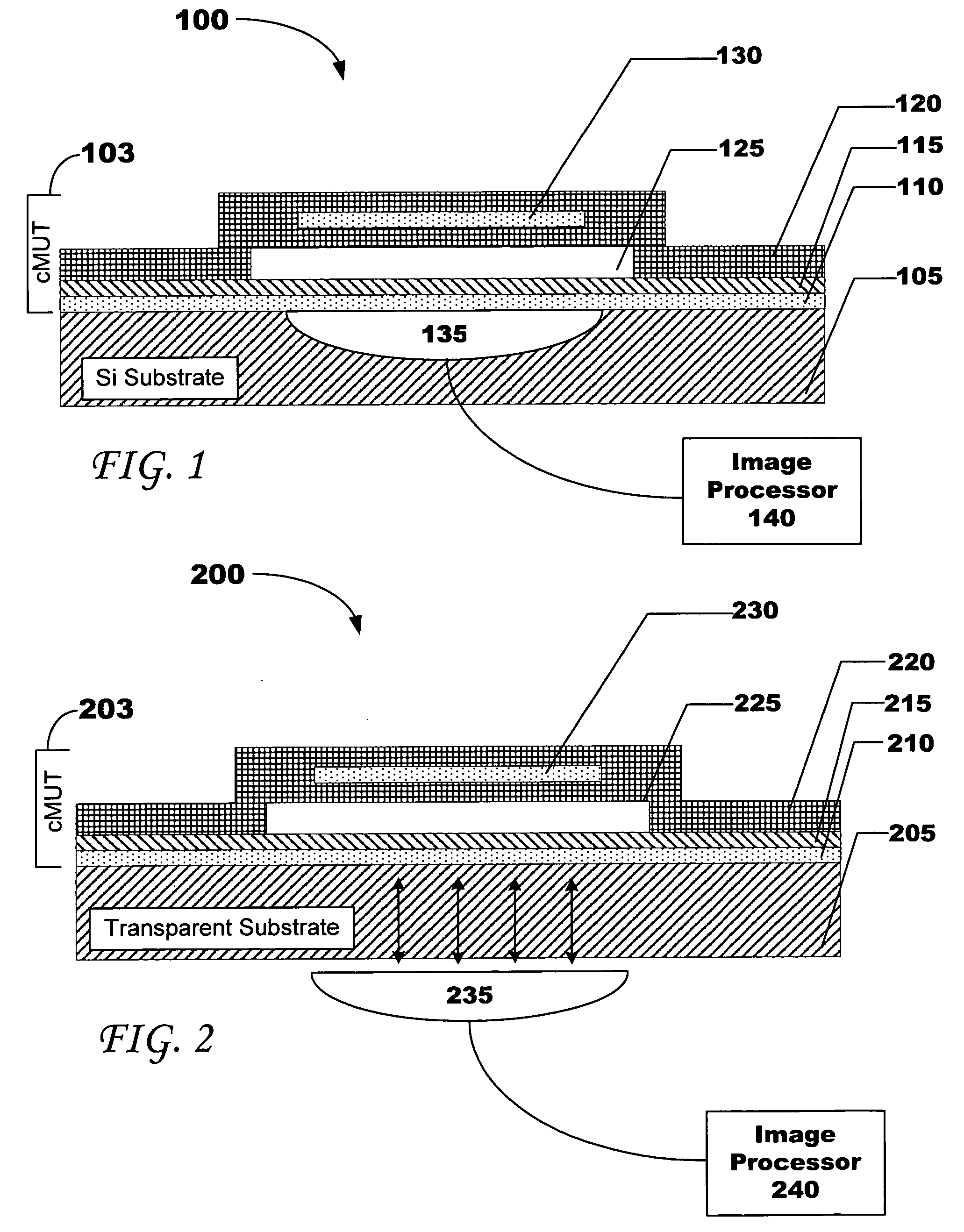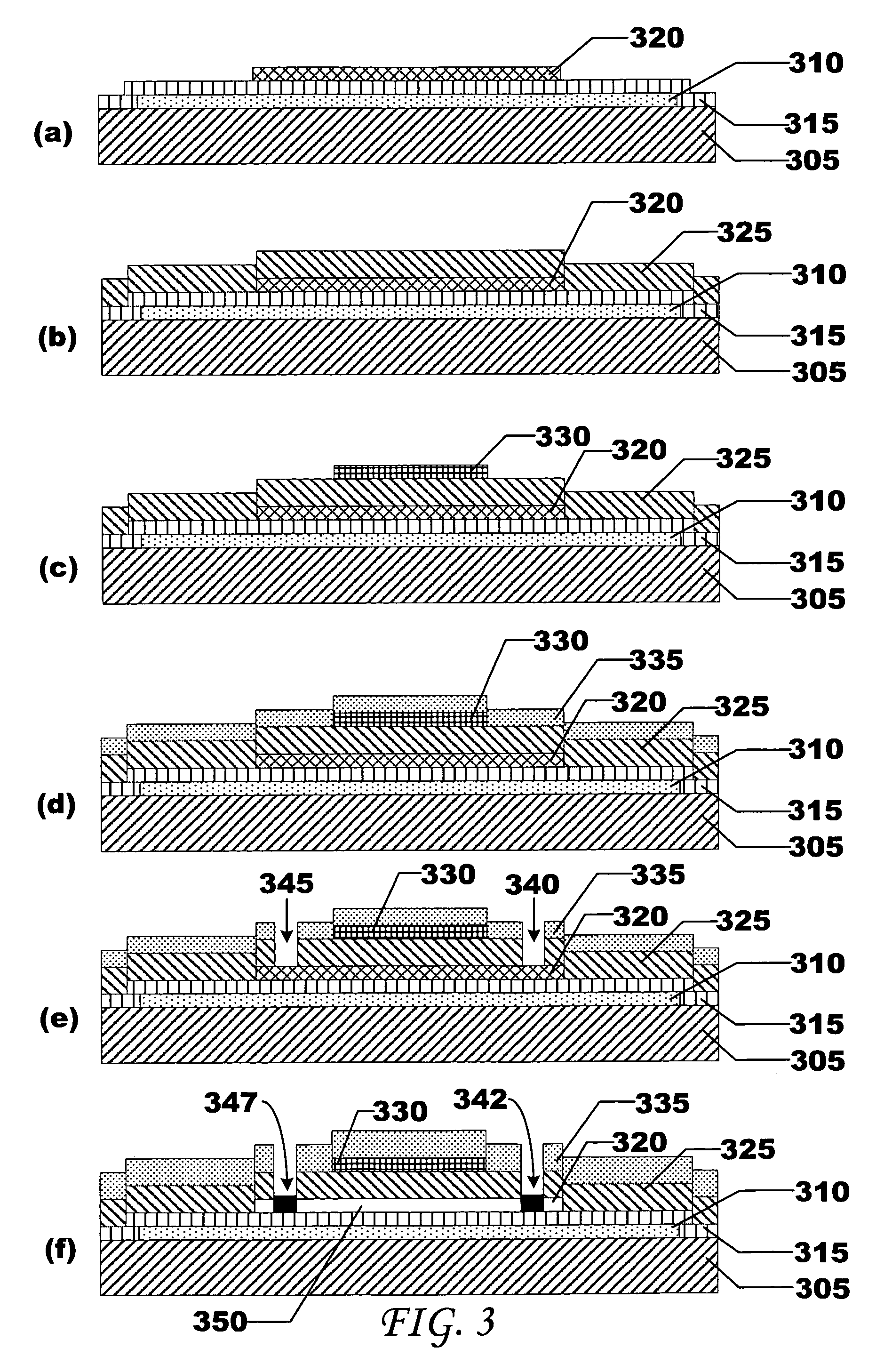cMUT devices and fabrication methods
a technology of capacitive micromachined ultrasonic transducers and fabrication methods, which is applied in the direction of mechanical vibration separation, instruments, pulse techniques, etc., can solve the problems of complex fabrication process, inability to assemble a cmut device into a cmut device, and inability to integrate post-process complimentary metal oxide semiconductors (“cmos”), so as to reduce device parasitic capacitance and improve electrical performance.
- Summary
- Abstract
- Description
- Claims
- Application Information
AI Technical Summary
Benefits of technology
Problems solved by technology
Method used
Image
Examples
Embodiment Construction
[0026] cMUTs have been developed as an alternative to piezoelectric ultrasonic transducers particularly for micro-scale and array applications. Since cMUTs are surface micromachined, they can be fabricated into one or two-dimensional arrays and customized for specific applications, and can have performance comparable to piezoelectric transducers in terms of bandwidth and dynamic range. A cMUT device typically incorporates a membrane, with an electrode, suspended above a conductive substrate or another electrode coupled to a substrate. The membrane can have elastic properties enabling it to fluctuate in response to stimuli. For example, stimuli may include, but are not limited to, external forces exerting pressure on the membrane and electrostatic forces applied through cMUT electrodes. cMUTs can transmit and receive acoustical waves. To transmit an acoustic wave, an AC signal and a large DC bias voltage are applied to the membrane. The DC voltage pulls down the membrane where the tr...
PUM
 Login to View More
Login to View More Abstract
Description
Claims
Application Information
 Login to View More
Login to View More - R&D
- Intellectual Property
- Life Sciences
- Materials
- Tech Scout
- Unparalleled Data Quality
- Higher Quality Content
- 60% Fewer Hallucinations
Browse by: Latest US Patents, China's latest patents, Technical Efficacy Thesaurus, Application Domain, Technology Topic, Popular Technical Reports.
© 2025 PatSnap. All rights reserved.Legal|Privacy policy|Modern Slavery Act Transparency Statement|Sitemap|About US| Contact US: help@patsnap.com



